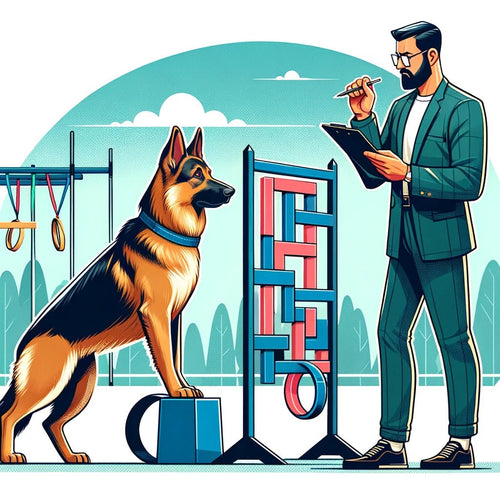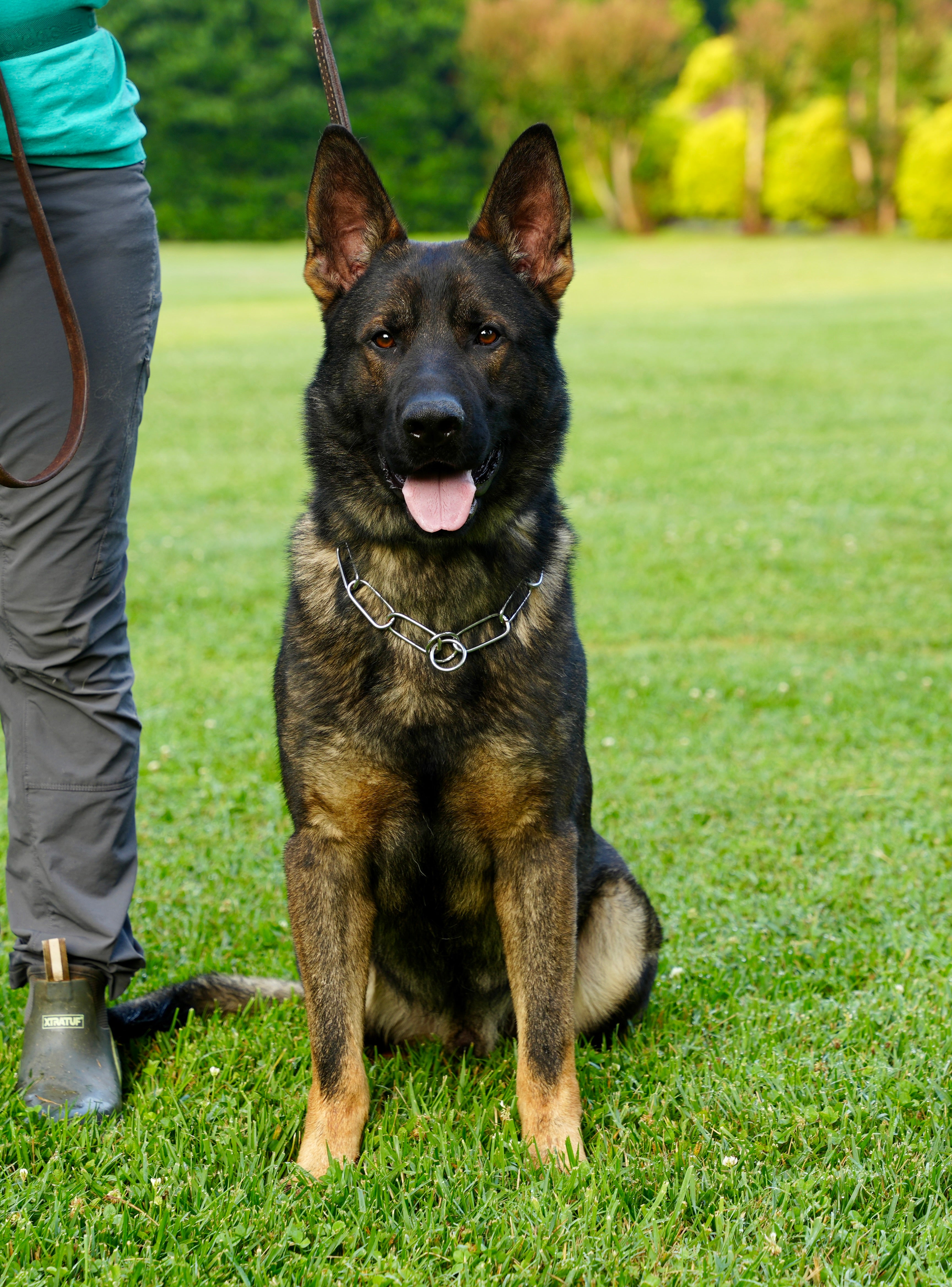Wayne Simanovich - September 16 2023
What to Look for When Evaluating a German Shepherd’s Training

TWhen it comes to protection dogs, professional training is crucial. Well-trained German Shepherds offer incredible protection and peace of mind, no matter what particular environment you’re using them. In fact, often times, the mere visual presence of a large, strong dog at your home is enough to scare away prowlers. “When someone sees me with this big, strong dog or sees a young woman with a big, strong dog, visually that has an impact,” says Wayne Simanovich. “That makes most people go the other way.”
Yet how well your dog responds to commands is a big deal — because on the rare occasion when you find yourself in a situation where you need protection, your dog’s training is what determines your safety. How do you know if a particular Schutzhund, German Shepherd, or other protection dog has been trained well? Whether it was trained as a puppy or as an adult, you need metrics to evaluate how well it knows how to protect.
With that in mind, consider the following key factors to evaluate protection dogs:
Various Environments:
Whether you’re evaluating a trained adult dog or an adolescent, to test training you need to take the dog in different environments — areas with high traffic like shopping malls, areas with children like a person’s home, etc. — in order to see if it’s capable of recognizing what is danger (and what isn’t). Likewise, taking a guard dog such as a Schutzhund into various environments will show whether or not it can handle changing sounds, smells, interactions, and so on.
Discernment:
Contrary to what many people assume, well-trained German Shepherds are usually friendly and sociable; their attitudes should change only when they sense danger. “A good dog should be an ambassador in the community and should accept new friendships,” Simanovich said. It will know when someone isn’t a threat. Protection doesn’t mean attacking everyone or everything; it means recognizing real threats and going into action mode when it is necessary. Furthermore, even when a well-trained dog senses danger, it should respond to its owner’s commands — such as being called off — immediately.
Off–Leash Control:
The way a dog behaves on a leash and off a leash reveals much about its training. Will the dog lose control as soon as it’s loose? Or does it still obey commands and maintain self-control when its leash is disengaged? Testing its responses both on and off a leash is important.
Distractions:
Protection dogs must be able to ignore distractions. If noises, movement or surprises throw the dog off, then it could easily be unable to protect its master. So to evaluate a guard dog’s training, you must test it around various distracting factors to see how it behaves.
While in the vast majority of cases all a good guard dog needs to do is look strong and watch for danger, knowing that it is a well-trained, capable protector is vital for its owners. You want to know that if an emergency situation ever does arise — whether at the park or in your home late at night — you can count on your dog to do the right thing. To test your dog in more than the basic, obvious ways, be sure to consider the factors listed above. Then you can rest assured you’re in good hands.
Have a Question? Contact us
Huggable Security ™
Trained by a World Champion. Delivered to your door.
Huggable Security ™
Trained by a World Champion.
Delivered to your door.

Featured Dog of the Month
Available for Delivery
No finer quality in a trained family companion. As good as it gets.
Contact Us for Current Availability

Fully Trained Adult German Shepherds
Available for Delivery
For over 40yrs the Fully Trained Adult has been the cornerstone of our program. Huggable Security delivered to your door.
Contact Us for Current Availability

Fully Trained Adult Belgian Malinois
Available for Delivery
For over 40yrs the cornerstone of our program. Huggable Security delivered to your door.
Contact Us for Current Availability

Trained Adolescent German Shepherds
Available for delivery
The adolescent age group is an excellent choice for quality and value. Bred, raised and trained at our facility.
Contact for more info

Trained Adolescent Belgian Malinois
Available for delivery
Adolescent Belgian Malinois from our C litter finished in the off leash obedience phases and started in the protection phases.
Contact for more info

Working German Shepherd Puppies
Limited Availability
We have a very high quality litter of puppies sired by one of Germany's top young performance males.
Details



